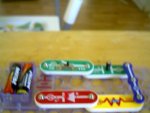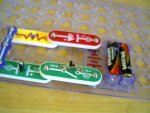pleiser
Senior Member
super capacitors backup power schematic
I am planning to make a simple laptop (more details here http://www.picaxeforum.co.uk/showthread.php?21068-i2c-byte-word-adress)
and was thinking I could add a super capacitor for power backup ( maybe this one http://www.sparkfun.com/products/746 ) (for when battery died, power while replacing battery) but I don't know how I would hook it up, or if it is possible at all. so my question is would it work and what would the schematic look like?
Patrick
I am planning to make a simple laptop (more details here http://www.picaxeforum.co.uk/showthread.php?21068-i2c-byte-word-adress)
and was thinking I could add a super capacitor for power backup ( maybe this one http://www.sparkfun.com/products/746 ) (for when battery died, power while replacing battery) but I don't know how I would hook it up, or if it is possible at all. so my question is would it work and what would the schematic look like?
Patrick
Last edited:



